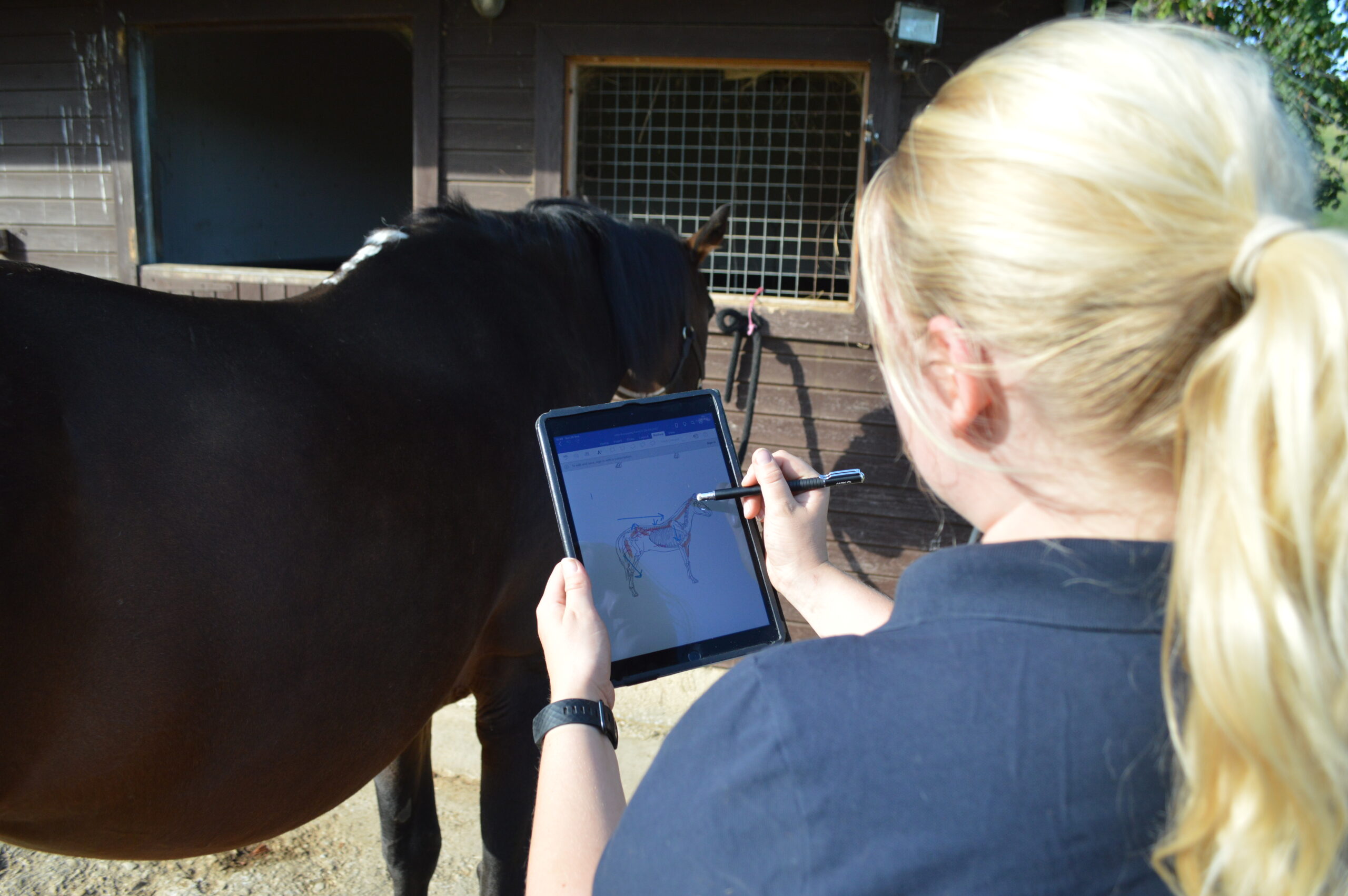What is Veterinary Physiotherapy?
Veterinary Physiotherapy, similar to human physiotherapy, can aid in the healing and rehabilitation of animals post-injury, promote the healthy development of younger animals, maximise sporting performance, and maintain the quality of life of ageing animals. The techniques used are based on current scientific research and applied using medical and musculoskeletal knowledge to ensure the highest standard of care.
Initial Assessment

Treatment begins with a full assessment of your animals medial history and the concerns you have referred them for. Then we assess how your animal moves, postures themselves and the health of their musculoskeletal tissues. This allows us to build a holistic picture of any issues at hand a tailor a treatment plan specifically for your animal.
Treatment

Treatment is aimed to reduce pain and discomfort, promote healing, increase mobility and maximise function. A range of manual techniques and electrotherapies are used to achieve this, depending on your animal’s needs. Improvements should be visible by the end of the session, however depending on this issues being treated, such a rehabilitation post-injury, several sessions may be required for optimal results.
Exercise Plan

Following treatment, you will be provided with a specialised exercise plan designed to help strengthen your animal and/or speed up their recovery. This is for you to carry out between sessions to ensure the best results. Exercises range from pole work to balance boards and will be tailored to your resources to make sure it is practical and achievable.
Veterinary Consent:
Veterinary physiotherapists work closely alongside vets as part of your animals health care team. In accordance with the Veterinary Surgeons Act of 1996 signed veterinary consent should be obtained prior to the treatment of any concern currently or previously overseen by the vet. For performance or maintenance appointments treatment may be allowed without veterinary consent following guidance given by the RCVS standards committee in Nov 2020.
You can download a consent form from the nearby link and return it to me prior to your visit either by email or if printed why not send me a photograph and return the paper copy to me during your appointment?
If you are unsure whether this applies to your animal please contact us for guidance.
Thank You 🙂
F.A.Q.
There are several reasons why you animal could benefit from veterinary physiotherapy:
- Perhaps the most obvious is that your animal has sustained an injury, seen their vet and would now benefit from some treatment to promote healing and maximise recovery otherwise knows as ‘rehabilitation’. Follow these links for more information on equine conditions and canine conditions that could benefit from vet physio.
- Another common reason for physiotherapy is to maximise sporting performance and reduce risk of injury; weather this be for a competition animal or for leisure sport.
- Older animals can benefit hugely from vet physio, working to maximise comfort and mobility long term to ensure the best quality of life.
- Young animals can also benefit from physio. Addressing issues early on and promoting correct musculoskeletal and neurological development maximises sporting potential, reduces risk of injury and promotes long term health as they age.
- Vet Physio can also be useful to help put your animal back on track when they are ‘not quite feeing right’.
This all depends on what your animal is being seen for. Maintenance animals may only require a few visits a year. Rehabilitation after injury may require visits as regally as weekly or bi-weekly for a number of weeks. This will be discussed with you during or following your first session and can be discussed before hand over email, message or phone call.
If your are concerned about cost physio post-injury treatment, these can usually be claimed on insurance. At Above and Beyond Veterinary Physiotherapy we also offer a ‘Performance & Rehabilitation’ rewards package designed for those requiring more regular treatment. View our pricing and packages page for more information on the cost of treatment.
At Above and Beyond Vet Physio we believe in results! We are incredibly keen to describe and demonstrate for you the changes we see following a session as well as long term. We may perform tests, take videos, images, measurements or templates during your session so that we can monitor long and short term improvements. Following treatment you may see changes including:
- Reduced pain and discomfort
- Improved quality of movement
- Increased joint mobility and range of motion (ROM)
- Reduced muscle tension, heat and swelling
Changes shouldn’t stop at the end of a session, the exercises prescribed for you to carry out are also a vital part of your animal progression. Meaning that improvement should continue between sessions. However, it is to note that in some cases changes may be seen over a number of sessions, for example promoting nerve, tendon or muscle healing or building muscle (known as hypertrophy).
If your horse has received a light or ‘maintenance’ treatment gentle exercise within 24 hours of treatment should be fine, in fact for some cases it may be advised! In scenarios where deep tissue work has been carried out, issues such as saddle discomfort or during post-injury rehabilitation time off of exercise may be required. The exercise plan provided for your horse following their session should help advice and guide you on how to safely exercising your horse following treatment.
If you have an specific exercise based commitments in close proximity to your animals treatment let us know before hand and we will ensure you are good to go 🙂

